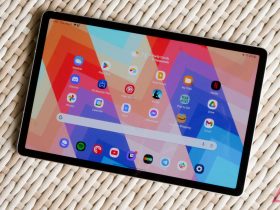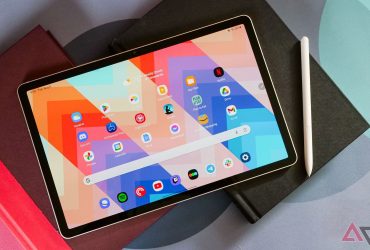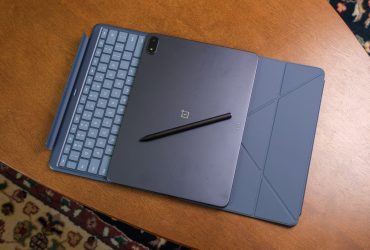
Contents
I become uneasy whenever tablets attempt to move beyond the realm of entertainment and light gaming. I never get adequate value for the premium I pay, and the extra horsepower on flagship tablets is wasted on me. I don’t believe it’s all my fault. The uses aren’t there for tablets that are heavily focused on productivity. I don’t edit 4K video on the go with my tablet. If I needed that, I’d bring along my more capable laptop.
Still, I like to keep an open mind, and the OnePlus Pad 3 seemed promising. It’s an impressive piece of hardware, and OnePlus has gone to great lengths to give me reasons to be more productive on the go; however, I’m not entirely convinced it’s succeeded. The OnePlus Pad 3 comes closer than any other tablet to making me a believer, but I have doubts.

OnePlus Pad 3
- Storage
- 256GB
- Operating System
- OxygenOS 15
- Battery
- 12,140mAh
- Display type
- LCD
- Price
- $700
- Colors
- Storm Blue
The OnePlus Pad 3 features an expansive 13.2-inch LCD panel with a 3.4K resolution and 120Hz refresh rate. It’s powered by a Snapdragon 8 Elite with 12GB of RAM, providing ample horsepower for even the most intensive Android apps. OnePlus included a massive 12,140mAh battery, which the company claims can hold a charge for 70 days on standby.
Pros & Cons
- Gorgeous display
- Snappy performance
- Intuitive software
- Considerable weight
- No fingerprint reader
Price, specs, and availability
The OnePlus Pad 3 is now available for preorder through OnePlus for $700, with deliveries estimated to begin in mid-July. OnePlus increased the price slightly over last year, but I’m not bothered by the change. It comes in one configuration, with 12GB of RAM and 256GB of storage, and is offered in one color: Storm Blue. There is no cellular variant available.
The tablet may cost only $700, but the accessories get pricey. I almost don’t want to think of the OnePlus Pad 3 as optional, because it’s a significant piece of the puzzle. Thankfully, if you preorder, OnePlus is giving the Smart Keyboard as a gift, along with the OnePlus Pad 3 Folio Case. Typically, the keyboard would cost a hefty $200, with the case running you another $100. Both are premium and do the job, but more on the keyboard later.
OnePlus Pad 3
- SoC
- Snapdragon 8 Elite
- Display type
- LCD
- Display dimensions
- 13.2″
- Display resolution
- 3392 x 2400
- RAM
- 12GB
- Storage
- 256GB
- Battery
- 12,140mAh
- Charging speed
- 80W
- SIM support
- No
- Operating System
- OxygenOS 15
- Front Camera
- 8MP
- Rear Camera
- 13MP
- Weight
- 675g
- Colors
- Storm Blue
- Price
- $700
A gorgeous display with drawbacks
It’s massive
Using a OnePlus Pad 3 is an exercise in contrasts. I love its expansive 13.2-inch LCD. It’s gorgeous and vibrant, with a resolution of 3392 x 2400 and a 144Hz refresh rate. The panel is plenty bright for outdoor viewing, and I enjoyed typing a portion of this review on the OnePlus Pad 3 on my deck. Movies and games look fantastic, and I’d stack the Pad 3 against any other tablet I own for entertainment. On a similar note, its eight speakers (four woofers and four tweeters) provide a decent sound that gets loud without distortion.
However, while the OnePlus Pad 3 has an outstanding display, it’s also my first complaint: it’s gigantic. The Pad 3 is unwieldy, and it’s not just because of its size — it weighs a chonky 675g. The weight makes the tablet uncomfortable to hold for extended periods, and you’ll need to keep it at a distance to view the entire display. With weight comes durability, and there’s no question the OnePlus Pad 3 is designed to last the course, with its aluminum unibody chassis.

The OnePlus Pad 3 moves away from the uniquely OnePlus design of its predecessor, and I don’t mind. I disliked the circular camera hump on the OnePlus Pad 2, and I’m pleased that the company opted for a more traditional tablet design for this year’s model.
OnePlus did an excellent job designing the keyboard case and folio case. The folio case is pretty standard, but the keyboard case complements the tablet well. It connects magnetically via pogo pins on the back of the tablet, and the Pad 3 instantly recognizes that I’m using the keyboard. The UI experience is well thought out, with intuitive gestures that help me navigate. I found myself looking for the home button, or a way to go back, but all I needed to do was swipe up with two fingers on the trackpad. I wouldn’t recommend the OnePlus Pad 3 without the keyboard, and that’s the only reason why it comes close to making me believe a tablet can be used for productivity.

Related
Outstanding raw flagship performance
But who is it for?

I’m almost tired of writing about the Snapdragon 8 Elite, because it’s been excellent at every turn. I’ve never had a bad experience with any smartphone powered by one, and it’ll chew through whatever you throw at it. I ripped through daily tasks, and even Genshin Impact, the great equalizer, ran smoothly in high settings. The Pad 3 also features 12GB of fast LPDDR5x RAM, ensuring your tablet will be snappy for years.
However, the OnePlus Pad 3’s impressive performance raises more questions than it answers. What am I doing on a tablet that I don’t even want to leave the house with that requires all that horsepower? Even if the Pad 3 were more portable, am I really doing anything more than typing up an article or browsing the web? Those are tasks I could accomplish handily on a base Apple iPad or even an Amazon Fire HD 10 for significantly less money. Even if the Pad 3 is a steal compared to the Samsung Galaxy S10 Ultra, that doesn’t mean I need it. A Ferrari makes a Porsche seem like the deal of the century, but you won’t see me running to my local dealership just yet.
OnePlus and I have been through it
OxygenOS is finally on track

I’ll never forgive the company for ruining my OnePlus 9 experience with its dismal OxygenOS 12 release. However, even if I’m not willing to forget, I’m willing to forgive, and OnePlus has done an excellent job turning things around with OxygenOS 15. The user experience is fluid and intuitive on the OnePlus Pad 3, and I like the company’s aesthetic changes for its Android 15 release.
More important than Android 15 is the inclusion of Open Canvas. OnePlus excels at multitasking better than any other Android manufacturer, and I’m disappointed that other companies haven’t derived inspiration from the fluid Open Canvas experience. If you give me a gigantic display, you’d better supply a way for me to use the space efficiently, and Open Canvas is a pleasure.

OnePlus was keen to tout the remote desktop capabilities of the Pad 3 through O+ Connect. It took considerable effort to get the app up and running, with a myriad of settings and permissions on both the tablet and my MacBook Air M4. However, it did work well when set up. I was able to transfer files back and forth and have complete control over my laptop via Wi-Fi. I see more applications for this on a desktop machine that you want to log into remotely. Still, I was pleased it functioned properly, even if OnePlus needs to improve the user experience during setup.
The company promises 3 years of OS upgrades for the OnePlus Pad 3, with 6 years of security patches. I would have liked more software support, but the extended security patches alleviated any concerns.

OnePlus also added its spin on AI to the device, going so far as to put a dedicated button on the keyboard. It functions well enough, but I’m still never going to speak out a query towards my tablet in a coffee shop. It’s not just OnePlus, as no Android manufacturer has sold me on the added benefits of AI just yet.
Excellent battery life and acceptable cameras
70 days of standby time

The OnePlus Pad 3 features a massive 12,140mAh battery cell with blistering 80W fast charging. The company also included a charging adapter in the box. It’s a full slate of wins, and I’m pleased to see OnePlus not joining the trend of charging people extra for faster speeds. A gigantic battery paired with the power-efficient Snapdragon 8 Elite is a potent combination, allowing for days of battery life on a single charge. If you’re a heavy gamer or have your screen on all day, you’ll want to top off every night, but that’s to be expected if you use your tablet more like a laptop.
OnePlus was proud of the 70-day standby time for the Pad 3, which seems plausible in my testing. I haven’t even used it for 70 days, let alone left it idle for that long, but based on the overnight drain percentages, the Pad 3 sips power when not in use.
The cameras aren’t anything special, but I don’t expect much from a tablet. The 8MP front cameras will do the job on your next Zoom call, and the 13MP rear camera is fine in a pinch.
Should you buy a OnePlus Pad 3?

I mentioned the OnePlus Pad 3 came closer than any other tablet to convincing me that I’d use one for productivity tasks, but it still falls short of the mark. I don’t think it’s a problem that can be solved for me. If you absolutely need a large, heavy tablet that can function as a quasi-laptop when you need it and a gigantic screen entertainment center when you don’t, have at it, because OnePlus has done an excellent job. However, for the rest of us, I’d still look towards more inexpensive options, like the Lenovo Idea Tab Pro, to get plenty of use for a lot less money.

OnePlus Pad 3
- Storage
- 256GB
- Operating System
- OxygenOS 15
- Battery
- 12,140mAh
- Display type
- LCD
I can’t fault the hardware of the OnePlux Pad 3. It’s an excellent performer with a gorgeous display and fantastic battery life. However, it’s tough to know who should buy one. If you’re in the market for an Android tablet that can do everything and serve as a laptop replacement, it’s a good choice.
What’s your reaction?
Love0
Sad0
Happy0
Sleepy0
Angry0
Dead0
Wink0
![google-messages-rolls-out-taller,-14-line-text-field-[u]](https://betadroid.in/wp-content/uploads/2025/06/24803-google-messages-rolls-out-taller-14-line-text-field-u-280x210.jpg)








Leave a Reply
View Comments